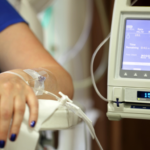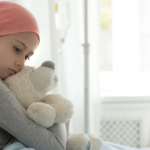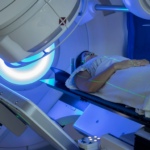
Breast cancer is a complex disease that affects a significant number of individuals worldwide. Understanding the stages of breast cancer is crucial for both patients and healthcare professionals to make informed decisions regarding treatment options and prognosis. This article aims to provide a comprehensive overview of the stages of breast cancer, from early detection to advanced metastatic disease.
Breast cancer refers to the abnormal growth of cells in the breast tissue. It is one of the most common types of cancer among women, but it can also affect men. Detecting breast cancer at an early stage greatly improves the chances of successful treatment and long-term survival. Therefore, having a clear understanding of the stages is essential.
Stage 0: Ductal Carcinoma in Situ (DCIS)
DCIS, or stage 0 breast cancer, involves abnormal cells that are confined to the milk ducts of the breast. Although these cells have not spread into the surrounding tissue, they have the potential to become invasive over time. DCIS is typically detected through mammography and may require surgical intervention or radiation therapy.
Stage 1: Early-Stage Invasive Breast Cancer
Stage 1 breast cancer is characterized by the presence of small tumors that have not spread to the lymph nodes or other parts of the body. It is divided into two subcategories: stage 1A and stage 1B. Diagnostic procedures such as mammography, ultrasound, and biopsy help determine the extent of the disease. Treatment options for stage 1 breast cancer include surgery, radiation therapy, and hormone therapy.
Stage 2: Locally Advanced Breast Cancer
Locally advanced breast cancer, categorized as stage 2, indicates the presence of larger tumors or cancer that has spread to the lymph nodes near the breast. Stage 2 breast cancer is further divided into two subcategories: stage 2A and stage 2B. Common symptoms of stage 2 breast cancer include breast lumps, nipple changes, and skin abnormalities. Treatment options for this stage may include surgery, chemotherapy, targeted therapy, and radiation therapy.
Stage 3: Advanced Breast Cancer
Stage 3 breast cancer is an advanced stage where the tumor has spread beyond the breast and nearby lymph nodes. It is divided into three subcategories: stage 3A, stage 3B, and stage 3C. Stage 3 breast cancer often requires a multidisciplinary approach, combining surgery, chemotherapy, radiation therapy, and hormone therapy. The treatment plan is tailored to the individual’s specific needs and the characteristics of the tumor.
Stage 4: Metastatic Breast Cancer
Metastatic breast cancer, also known as stage 4 breast cancer, indicates that the cancer has spread to distant parts of the body, such as the bones, liver, lungs, or brain. At this stage, the focus shifts from curative treatments to managing the disease and improving the patient’s quality of life. Treatment options for stage 4 breast cancer may include systemic therapies like chemotherapy, targeted therapy, hormone therapy, and immunotherapy.
Factors Affecting Treatment Decisions
Several factors influence the treatment decisions for breast cancer. These include the patient’s age, overall health status, personal preferences, and the presence of specific biomarkers. Biomarker testing helps determine the subtype of breast cancer and allows for targeted therapies, such as HER2-targeted drugs or hormone-blocking medications. Additionally, multidisciplinary care involving a team of specialists ensures a comprehensive approach to treatment.
Emotional Impact of Breast Cancer Stages
The diagnosis of breast cancer can have a significant emotional impact on individuals. It is important to address the psychological aspects of the disease and provide support to patients throughout their treatment journey. Coping strategies, such as joining support groups, seeking therapy, and maintaining a positive mindset, can help individuals navigate the emotional challenges associated with breast cancer.
Survivorship and Long-Term Management
Survivorship refers to the period after completing breast cancer treatment. It is crucial for individuals to adopt a survivorship care plan that includes regular follow-up visits, surveillance for recurrence, and managing long-term side effects of treatment. Making lifestyle changes, such as maintaining a healthy diet, engaging in physical activity, and avoiding tobacco and excessive alcohol consumption, can significantly reduce the risk of recurrence and improve overall well-being.
Summary:
Breast cancer is not only a physical challenge but also an emotional one. It is important for individuals to address the psychological impact of the disease and seek support from their healthcare providers, support groups, and loved ones. Cancer Care Pune recognizes the importance of addressing the emotional well-being of their patients and provides comprehensive support services to help individuals cope with the challenges they may face.
Survivorship is a significant aspect of breast cancer care. After completing treatment, individuals are encouraged to follow a survivorship care plan that includes regular follow-up visits, surveillance for recurrence, and managing long-term side effects. Cancer Care Pune focuses on providing personalized survivorship care, empowering individuals to lead healthy lifestyles and reduce the risk of recurrence.




